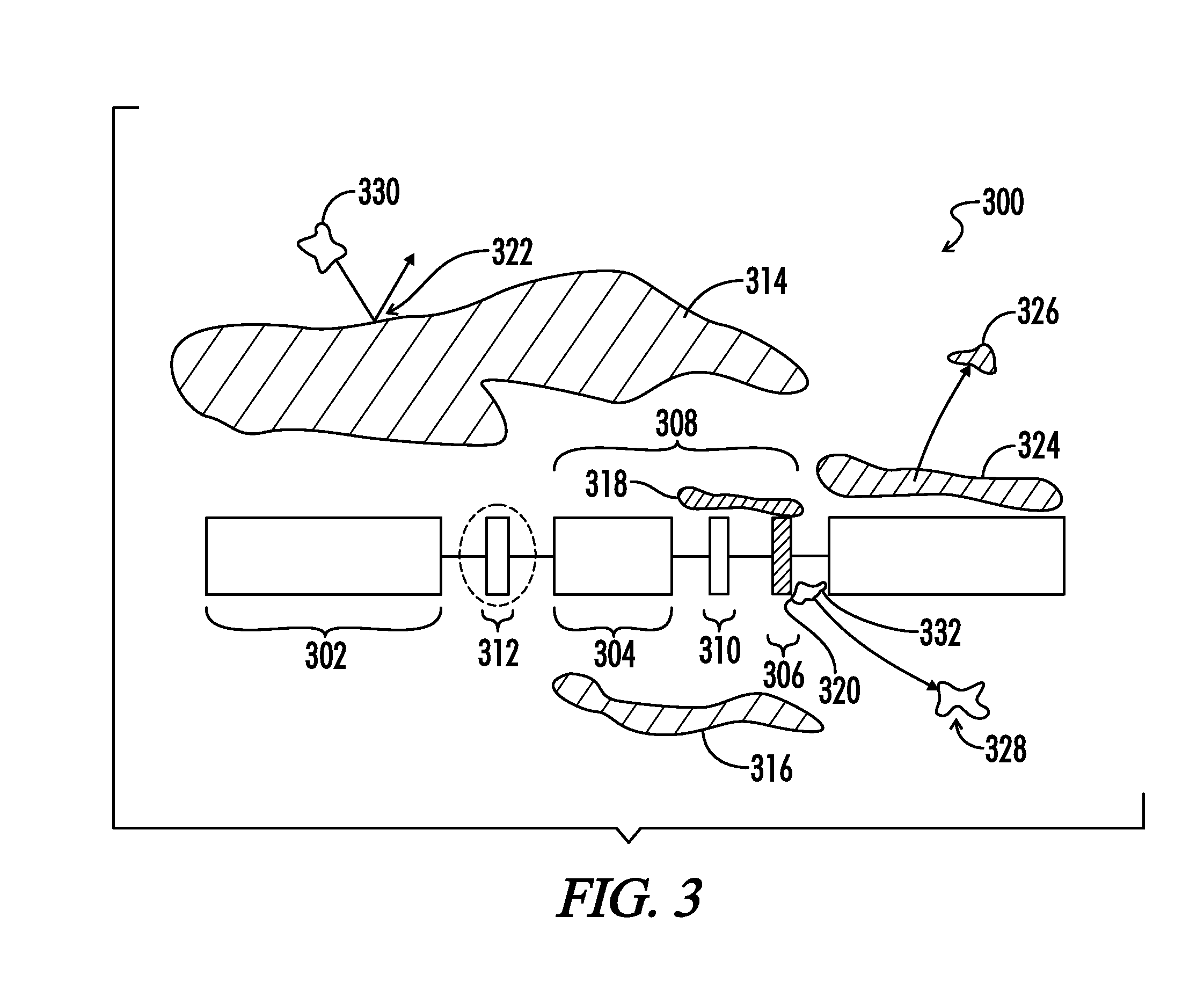Copolymers of hydrophobic and hydrophilic segments that reduce protein adsorption
a hydrophilic and hydrophobic technology, applied in the field of copolymers, can solve the problems of poor volume stability of hydrophilic substances and easy hydrolysis and enzymatic degradation, and achieve the effects of superior hyaluronic acid structure, and improved stability in a living tissue environmen
- Summary
- Abstract
- Description
- Claims
- Application Information
AI Technical Summary
Benefits of technology
Problems solved by technology
Method used
Image
Examples
example 1
Polyethylene oxide / Polypropylene oxide copolymers
[0110]Water soluble tri-block copolymers of polyethylene oxide (PEO) and polypropylene oxide (PPO) are commercially available non-ionic macromolecular surface active agents. Variation of the copolymer composition (PPO / PEO ratio) and molecular weight (PEO and PPO block lengths) during synthesis leads to the production of molecules with differing properties. Unfortunately, commercially available forms employ block structures that are typically larger than desired in certain embodiments of the present disclosure.
[0111]Since PEO is more reactive than PPO, fine scale block structures cannot be formed by merely placing the ratio amounts of PEO and PPO together in a reactor. Alternating segments of PEO and PPO can be synthesized by the sequential addition of first propylene oxide (PO) and then ethylene oxide (EO). These oxyalkylation steps are carried out in the presence of an alkaline catalyst, for example, sodium or potassium hydroxide. Th...
example 2
Hyaluronan Isocyanate
[0112]Hyaluronan is comprised of repeating segments of C14H21NO11, each containing 5 hydroxyl groups (OH). To form a diisocyanate of hyaluronan one reacts a quantity of diisocyanate containing 2 moles of NCO greater than the number of moles of OH. Thus, for a hyaluronan containing 1 unit of C14H21NO11 per molecule, 1 mole of hyaluronan molecules is to be reacted with 7 moles of diisocyanate. The reaction is performed in an organic solvent, where the hyaluronan is altered by ammonia to make it soluble in an organic solvent, such as tetrahydrofuran. A small amount of tin catalyst is added to promote urethane link formation between the hydroxyls of the hyaluronan and the isocyanate groups of the diisocyanate. To discourage chain extension, the hyaluronan is first dissolved in organic solvent and set aside. The reactor is charged with catalyst and diisocyanate and heated to 80 degrees C. The hyaluronan solution is slowly added to the reactor and the exotherm monitor...
example 3
Hyaluronan Polyurethane
[0114]A polyalkylene copolymer of PPO and PEO is synthesized according to EXAMPLE 1, wherein the PEO blocks contain 3 propylene oxide units, the PPO blocks contain 1 ethylene oxide unit, and these PEO and PPO blocks alternate, wherein the first block is a PEO and the last block is a PPO. The number of functional OH groups per molecule is approximately 2. A hyaluronan diisocyanate is synthesized according to EXAMPLE 2 wherein the molecular weight of the hyaluronan diisocyanate is approximately 3 times the molecular weight of the polyalkylene copolymer.
[0115]If the polyalkylene component or the hyaluronan diisocyanate components are not in liquid form at a reaction temperature of approximately 80 degrees C., then these components are dissolved in an organic solvent devoid of OH groups. The reactor is charged with 1 mole of hyaluronan diisocyanate and heated to 80 degrees C. The polalkylene copolymer is added slowly, waiting for the exotherm to subside after each...
PUM
| Property | Measurement | Unit |
|---|---|---|
| molecular weight | aaaaa | aaaaa |
| water content | aaaaa | aaaaa |
| temperature | aaaaa | aaaaa |
Abstract
Description
Claims
Application Information
 Login to View More
Login to View More - R&D
- Intellectual Property
- Life Sciences
- Materials
- Tech Scout
- Unparalleled Data Quality
- Higher Quality Content
- 60% Fewer Hallucinations
Browse by: Latest US Patents, China's latest patents, Technical Efficacy Thesaurus, Application Domain, Technology Topic, Popular Technical Reports.
© 2025 PatSnap. All rights reserved.Legal|Privacy policy|Modern Slavery Act Transparency Statement|Sitemap|About US| Contact US: help@patsnap.com



